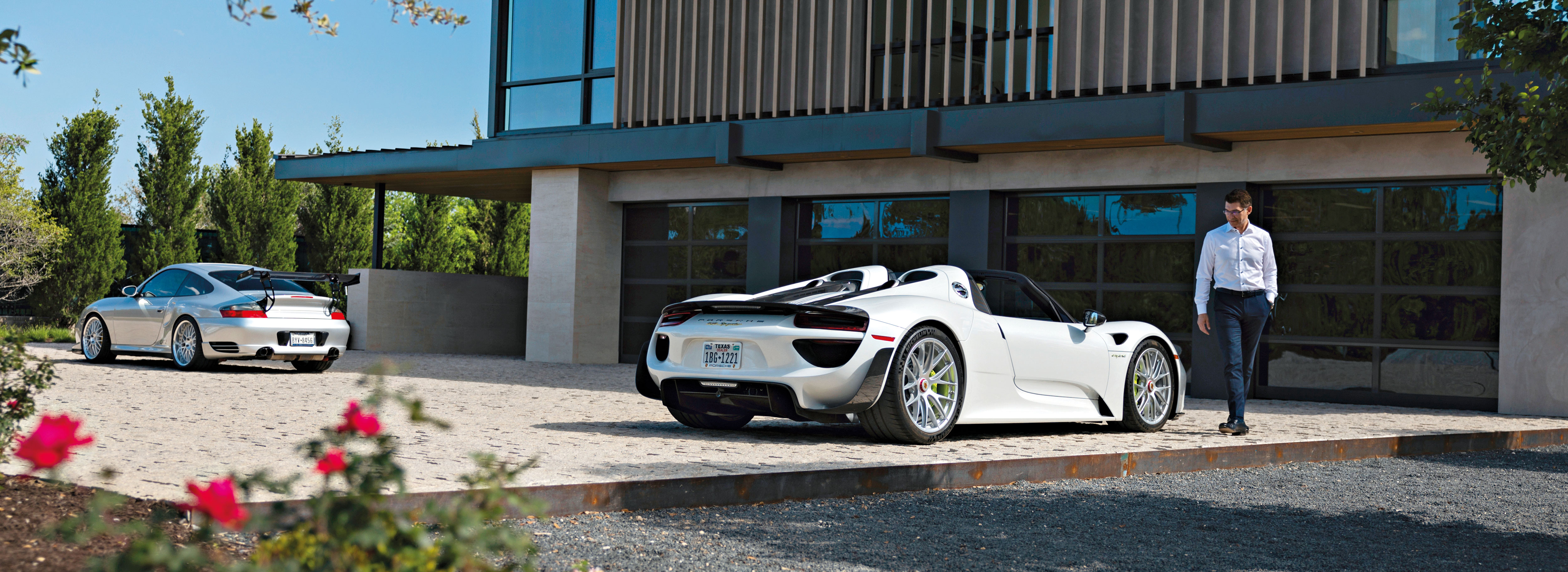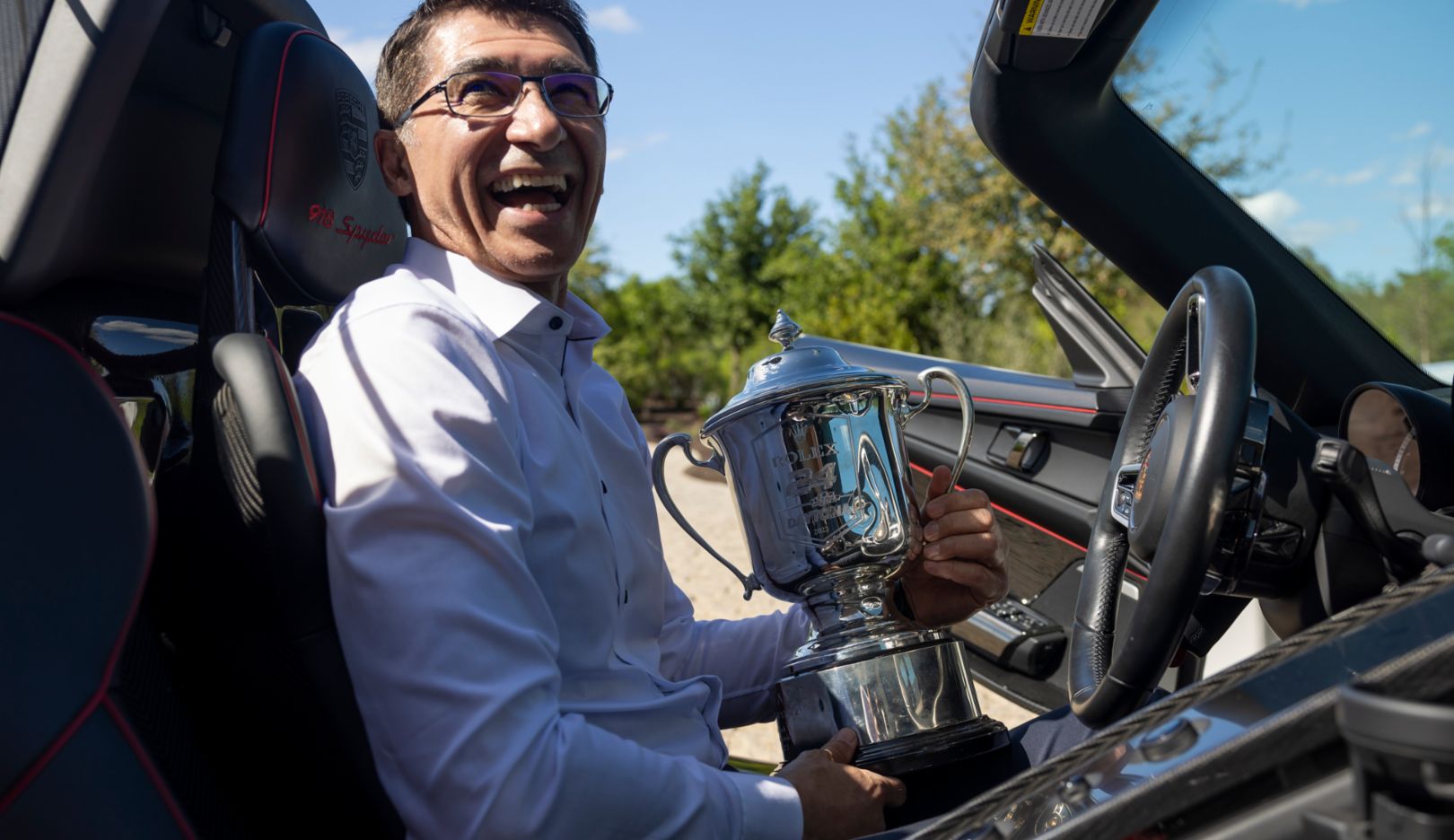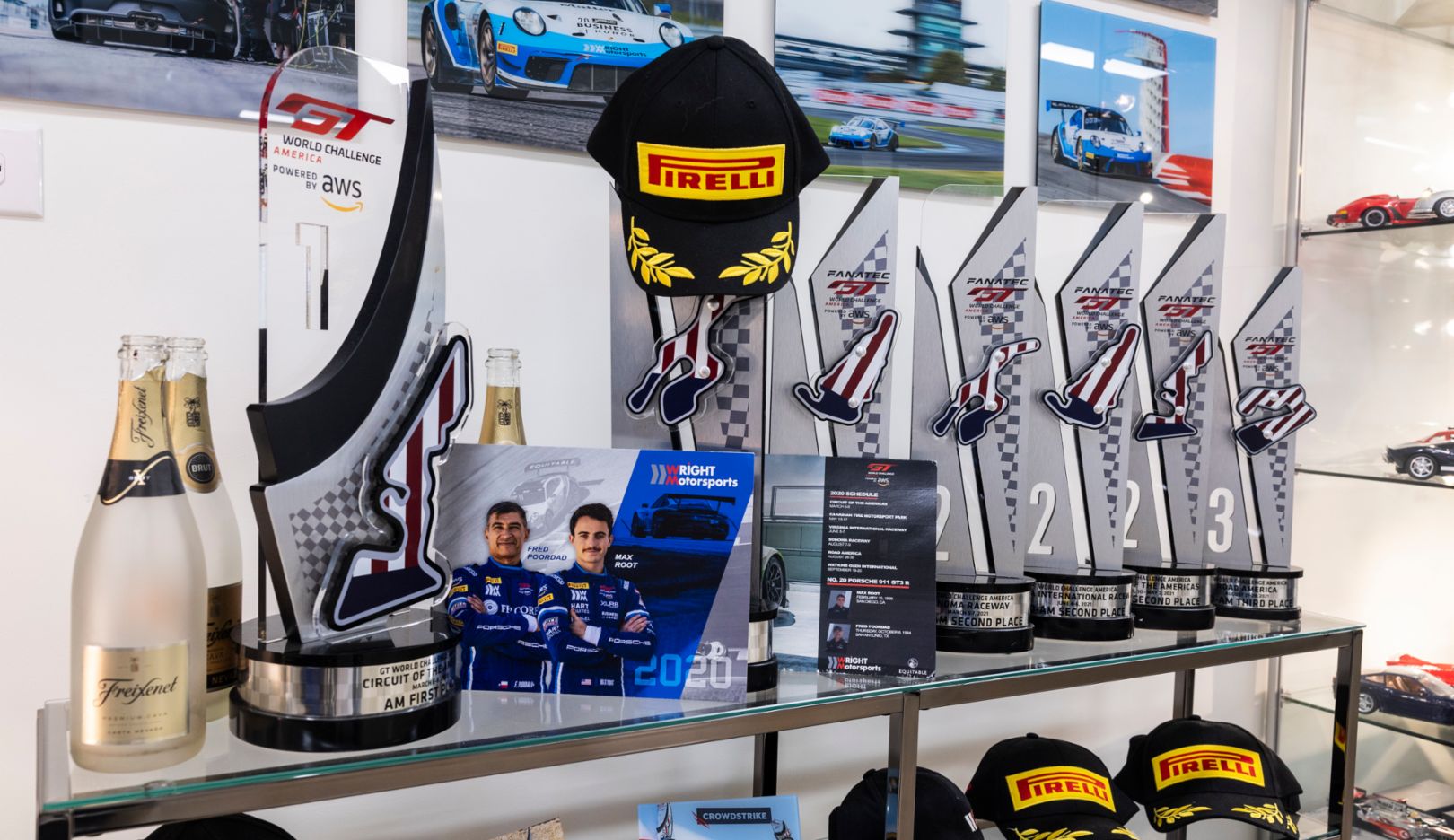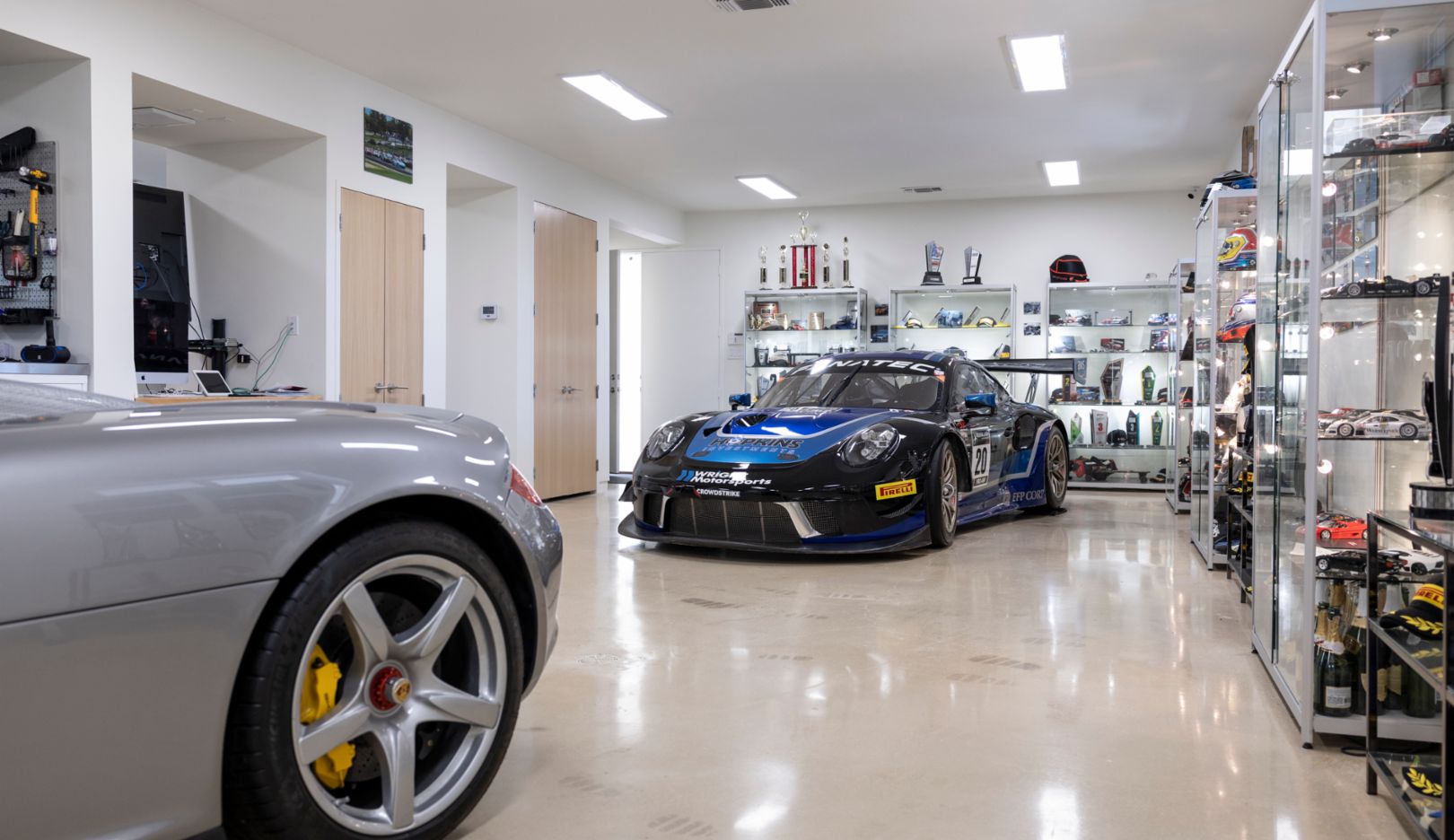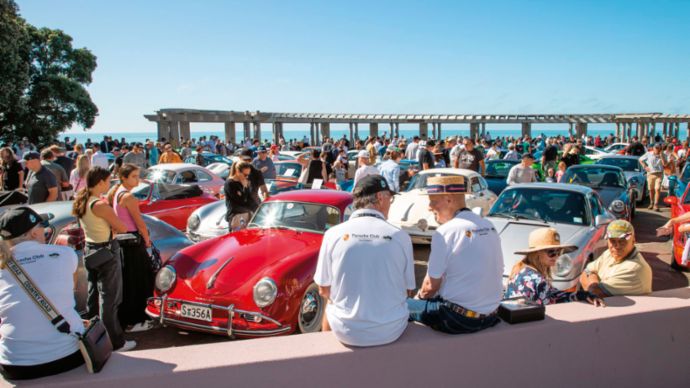Symbiosis of Passions
Professor Fred Poordad is a doctor out of passion. The American is an expert of global renown in the field of liver research. And he is as ambitious and successful a medic as he is in his second career as a race driver, too.
As a child, Fred Poordad only ever doodled one make of car. He loved the shape of the 911. But as a teenager, he couldn’t imagine ever owning a 911, let alone racing one himself. “From an early age, I wanted to be a good doctor,” says the 59-year-old Texan.
As a young medical intern in 1990, he needed a car. Next to the used car dealership in Akron, Ohio, he discovered a Porsche showroom. “Have you ever driven a Porsche?” the salesman asked him. “I’ve never even sat in a Porsche!” answered Poordad. Following a test-drive, he absolutely had to have that three-year‑old Porsche 944 Turbo in Midnight Blue Metallic. “The car cost me more than a year’s salary. I had to borrow money from my father and my girlfriend and moonlight to pay it off.”
The next stop in his stellar medical career was Los Angeles. Poordad also took his passion for Porsche to a new level with a 911 Turbo (996), built in 2002. To enhance the vehicle’s performance, he got a specialist to modify it. Among other things, with a roll cage, larger turbochargers, and a GT3 suspension. Upon collecting the car, he was given the well-intentioned advice that he should hone his skills in kart racing in order to drive this exceptional sports car. Which he promptly did for a year. He then joined the Porsche Owners Club (POC) and entered the club’s own Boxster Cup. “Managing momentum and the corners with the Boxster was phenomenal. It was incredibly balanced.”

A dazzling collection:
Behind Fred Poordad’s Porsche 911 GT3 R (991), there is a collection of trophies and memorabilia from his 16-year racing career.In 2009, the POC named Poordad “Rookie of the Year.” He soon had his sights set on a new goal: participating in a predecessor to the North American Porsche Carrera Cup series. To this end, he purchased a 911 GT3 Cup (997) – much to the dismay of his concerned wife Judy. But she understood that motorsport not only inspired him, but was also shaping him as a person. Nor was Fred Poordad’s passion for sports car racing dampened by the birth of his daughter Riley in 2010 and, three years later, of her brother Austin.
As Head of Hepatology at the Cedars-Sinai Medical Center in Los Angeles and with his job at the University of Texas Health Science Center in San Antonio, his work took up a lot of his time back then. He and his team made critical advances in the treatment of viral hepatitis and were also involved in developing medications to treat hepatitis C. Poordad has authored hundreds of published studies and travels around the world as an expert on liver disorders and transplants. The hours he spent in his race car gave him balance.
He stepped up his training and changed his diet for the 24 Hours of Daytona in 2012. He lost 15 kilograms, gained muscle mass, improved his fitness level, sweated it out in the sauna, and practiced on his own simulator.

A rare moment of relaxation at home:
Fred Poordad’s home in San Antonio is bright and airy. It offers him space to relax – and features an opulent garage.Poordad wasn’t doing it for the kick. “For me, there’s no real adrenaline in driving a race car,” he says. “It’s a controlled environment. You’re thinking about the possibilities in advance and then you have to be quick enough to react as they happen.” Having to deliver top performance under pressure helps him in his everyday work, too. “Racing pushes the limits of what you find stressful.”
Poordad has had firsthand painful experience of how dangerous motorsport can be. After winning the title in the Pirelli Cup Challenge Championship in 2015 with a 911 GT3 Cup (991), he entered the Bathurst 12 Hour in Australia in 2017 in another manufacturer’s vehicle. He had his worst-ever accident there, which left him with a broken back, broken ribs, and a collapsed lung. “I realized the safety of Porsche versus other brands – easier to handle and more protective in a crash situation,” he says, thinking back to the year he spent recovering.
He returned to the racetrack via the Porsche Racing Experience (PRE). He scored an overall victory in the Am class of the 2020 GTWC America and victory in the Pro Am class of the 2021 GTWC America. In the FIA World Endurance Championship (WEC), he took the Porsche 911 RSR to world championship level in the GTE Am class. And in 2023, he won the LMP2 class in the 24 Hours of Daytona.
The fact that his love of Porsche isn’t limited to his racing activities is illustrated by his private collection. He kept his first-ever 911, the modified Turbo. His collection now also includes a 718 Spyder, a 911 GT3 and a GT3 RS (both 992), and a GT2 RS (991). “Every 911 gives me a 911 feel, but with nuanced differences,” he says. He also owns two 918 Spyder models. “An amazing machine!” He raves about the character of the Carrera GT, another limited edition of which he has no less than five. “In my opinion, it’s the ultimate analog supercar.”

Fred Poordad:
Multiple glossy Porsche Carrera GT models dominate the middle of the garage. And other treasures are tucked away, too.The medical and motorsport worlds merge symbiotically in Fred Poordad’s life. His inspirational diagnosis: “The overlap is the precision and exact nature of both fields. You’ve got to be a student and never stop learning.”
Consumption data
911 GT3 (2023)
911 GT3 RS
-
13.2 l/100 km
-
299 g/km
-
G Class
-
G Class
